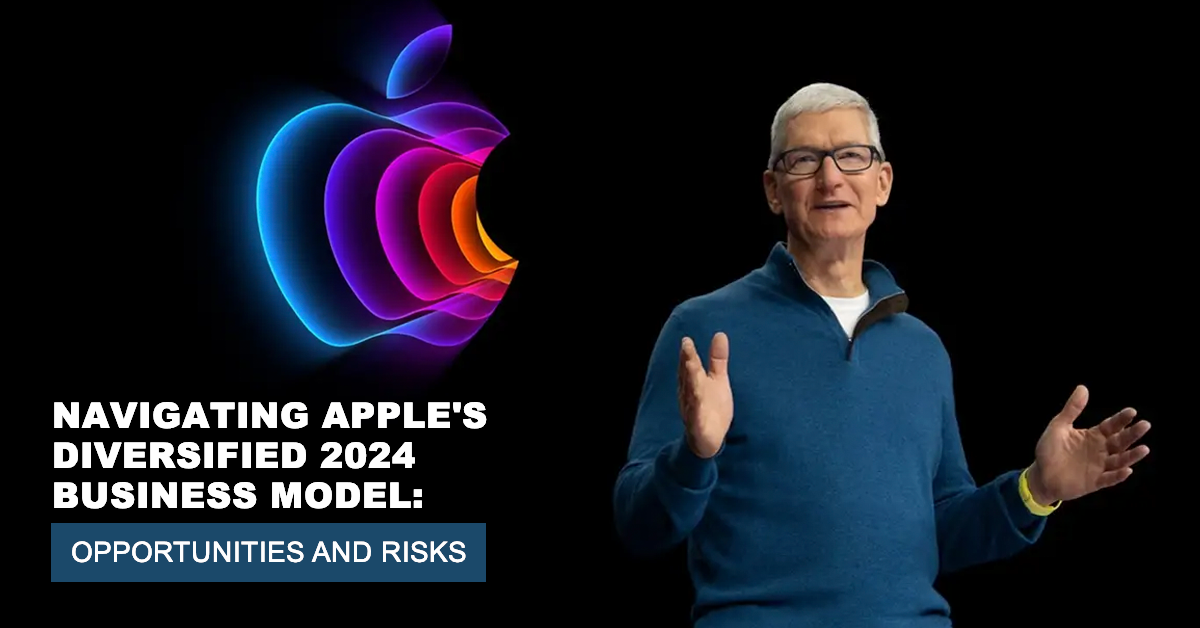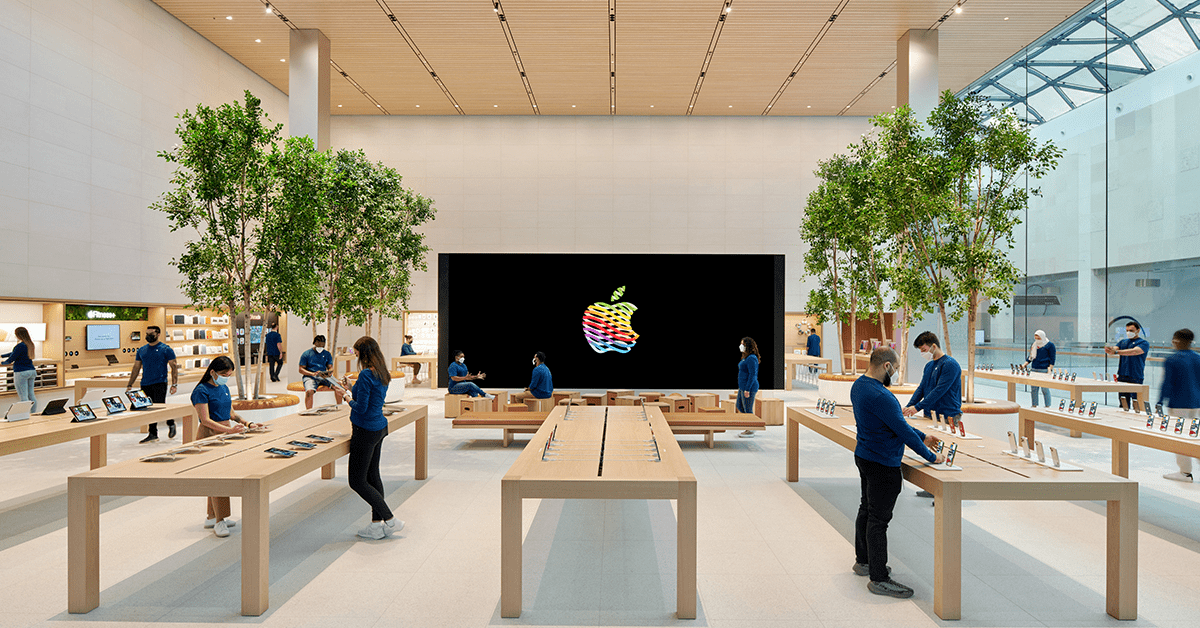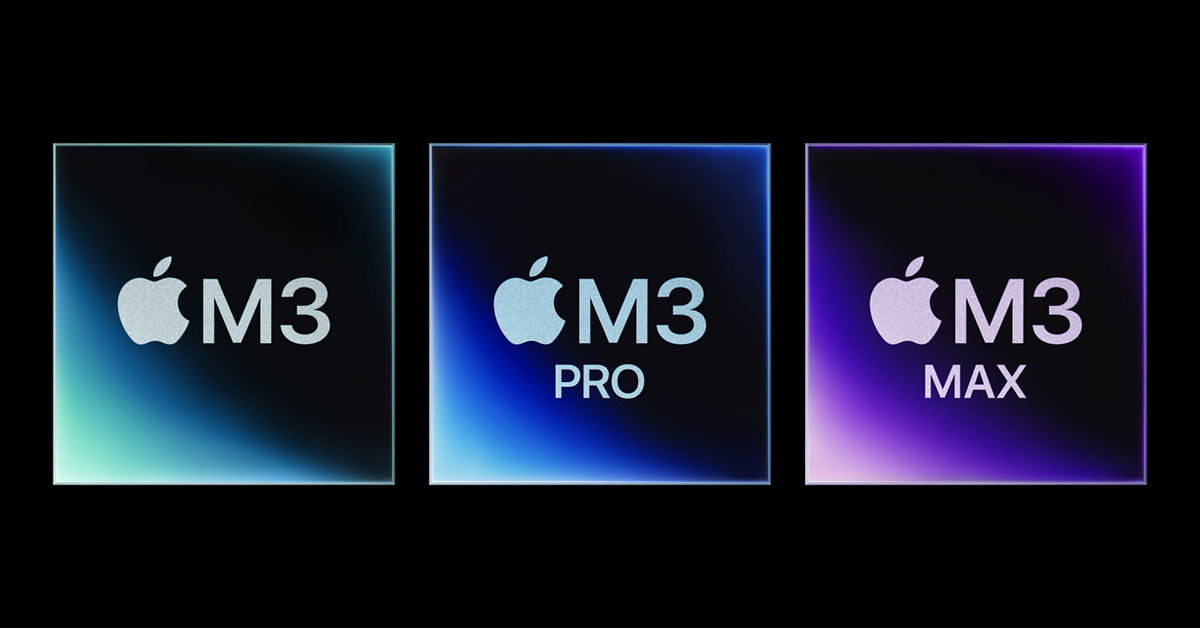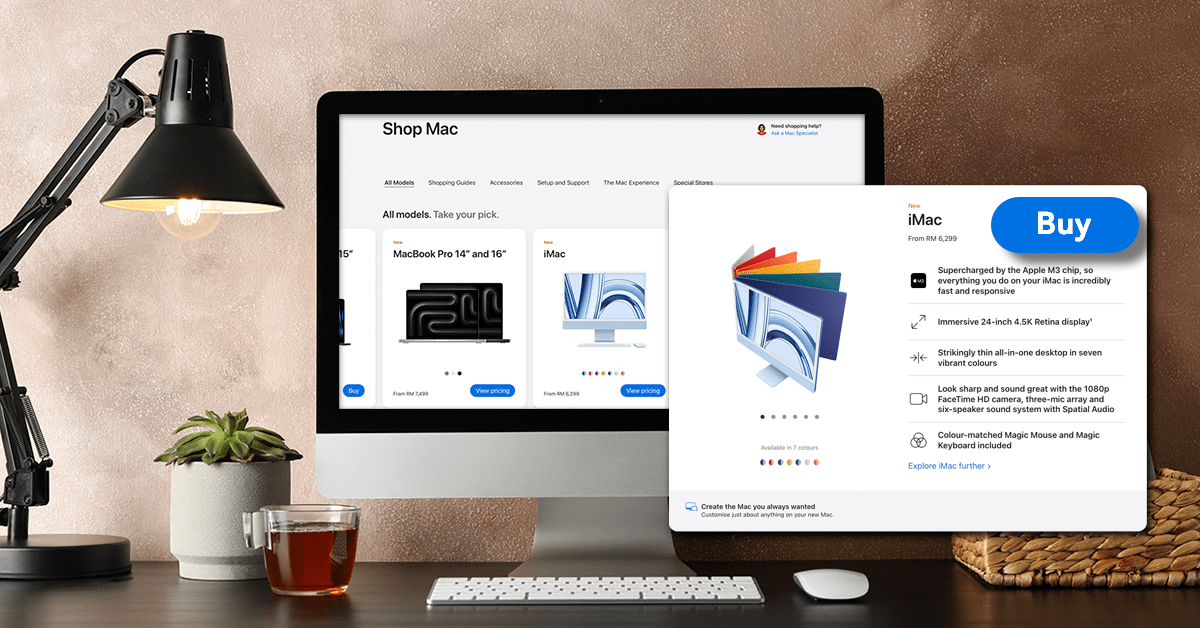
As we approach 2024, Apple Inc. continues to shape its business model and strategy around key principles that not only reinforce its market position but also offer significant opportunities for mature businesses looking to align with Apple’s trajectory.

1. Emphasis on Product Design and Functionality Business Model
Apple’s strategy places a strong emphasis on the aesthetics and usability of its products. This focus isn’t just about creating visually appealing devices; it’s about ensuring that each product is intuitive and provides a seamless user experience. By prioritising design, Apple products often set industry standards, influencing user expectations and market trends.
For mature businesses, this approach serves as a valuable lesson. By prioritising design and functionality in their products or services, businesses can enhance user experience, boost brand loyalty, and differentiate themselves in competitive markets. This strategy involves not just the physical design but also the user interface and overall user experience. Incorporating these elements into product development can lead to higher customer satisfaction and, in turn, drive business growth.

2. Strengthening the Ecosystem
Apple’s ecosystem is a unique blend of hardware, software, and services designed to work seamlessly together, offering users a unified and intuitive experience. This ecosystem approach extends from iPhones, iPads, and Macs to services like iCloud, Apple Music, and the App Store. By ensuring that each product and service complements and enhances the others, Apple creates a cohesive and interconnected environment that encourages customer loyalty and increases the lifetime value of each customer.
For mature businesses, this ecosystem model presents several opportunities. By developing products or services that integrate smoothly with Apple’s ecosystem, businesses can tap into a large and loyal customer base. This could mean creating accessories that complement Apple products, developing apps that offer unique functionalities within the iOS environment, or providing services that enhance the Apple user experience.
Furthermore, aligning with Apple’s ecosystem standards, which prioritise quality, user experience, and security, can elevate a business’s brand perception. This alignment can lead to potential partnerships with Apple, increased visibility in Apple’s marketplaces, and a stronger position in an increasingly competitive tech landscape.
Strengthening the ecosystem is about creating a harmonious and interconnected suite of products and services that not only retain existing customers but also attract new ones, leveraging Apple’s vast and engaged user base.

3. Enhanced Consumer Service Experience
Apple’s commitment to an enhanced consumer service experience is a multi-faceted approach that goes beyond mere customer support. It’s about creating a complete, satisfying experience for the user from the moment they interact with an Apple product or service. This involves:
Intuitive and User-Friendly Products
Apple designs its products with the user in mind, ensuring ease of use and accessibility. This reduces the need for extensive customer support and builds user confidence.
Comprehensive Support System
Apple provides extensive support through various channels such as Apple Stores, online support, and phone assistance. This multi-channel approach ensures that customers can receive help in the manner most convenient for them.
Proactive Problem Solving
Apple’s approach to customer service includes proactively addressing potential issues before they become problems for users. This could be through software updates, informative guides, or community forums.
Personalised Assistance
Apple’s customer service is often personalised. Whether it’s in-store or online, Apple strives to make the customer feel valued and understood, enhancing their overall experience with the brand.
Training and Resources
Apple invests heavily in training its staff to provide knowledgeable and friendly service. Additionally, resources like tutorials, FAQs, and user forums are readily available to empower users to find solutions independently.
For mature businesses, replicating this level of consumer service can lead to increased customer loyalty and a strong brand reputation. It involves investing in staff training, developing a comprehensive support system, and always prioritising the customer’s experience with the product or service.

4. Diversifying Revenue Streams
Apple’s strategy to reduce reliance on iPhone sales and diversify its revenue sources is a crucial aspect of its business model. This approach not only minimises risk but also opens new avenues for growth and innovation. For mature businesses, this strategy underscores the importance of not being overly dependent on a single product or market. By diversifying, companies can mitigate risks associated with market fluctuations or changes in consumer preferences.
For instance, a business that primarily relies on one flagship product could explore new product lines or services that complement their existing offerings. This could involve venturing into related markets or developing new technologies that align with current trends. Additionally, mature businesses could explore partnerships or collaborations to expand their reach and tap into new customer bases.
The key takeaway from Apple’s strategy is the importance of adaptability and the willingness to explore new opportunities. This approach not only helps in maintaining relevance in a dynamic market but also paves the way for sustained growth and stability.

5. Financial Growth and Market Expansion
Apple’s strategy for financial growth and market expansion is multifaceted, focusing on product diversification and entering new markets. The company’s projected revenue growth is underpinned by several factors:
New Products and Technologies
Apple is exploring innovative products like the Apple Car and AR/VR technologies. These ventures represent new revenue streams and market segments, potentially revolutionising sectors like automotive and wearable technology.
Mac and iPad Demand
App Store and Services
The success of the App Store and services like Apple Music and iCloud provides a steady income stream. This diversification helps reduce reliance on hardware sales alone.
For mature businesses, these areas offer collaborative and market opportunities. For instance, companies in the automotive supply chain could benefit from developments related to the Apple Car, while software developers can capitalise on the growing demand for apps and services within Apple’s ecosystem.
Additionally, businesses specialising in AR/VR technologies could find partnership opportunities as Apple expands into these fields. By aligning with Apple’s innovative spirit and its new product ventures, mature businesses can access new markets and revenue streams.

6. Investment in Research and Development
Apple’s robust investment in Research and Development (R&D) is a key facet of its business strategy, propelling innovation and maintaining its competitive edge. This investment not only fuels the introduction of cutting-edge products but also underscores Apple’s commitment to exploring new technological frontiers.
Technological Innovation
Apple’s R&D focuses on developing new hardware, like the advanced M-series processors, and software that is optimised for its ecosystem. This continual innovation ensures Apple stays at the forefront of technology, setting industry standards.
Expanding into New Domains
Apple is not just about consumer electronics; its R&D extends into areas like artificial intelligence and machine learning. These technologies are integrated into products to enhance user experience, ranging from improved security features to interactive applications.
Healthcare Technology
A significant part of Apple’s R&D is directed towards healthcare technology. By incorporating health-related features in devices like the Apple Watch, Apple is positioning itself as a key player in the health and wellness sector, appealing not just to everyday consumers but also to healthcare professionals.
Augmented and Virtual Reality
Apple’s investment in AR and VR technologies indicates its interest in spatial computing, a field that is expected to grow significantly. This long-term investment suggests that Apple is preparing for the next big shift in how we interact with technology.
Global R&D Centers
Apple’s global investment in R&D centres, such as those in China and the United Kingdom, underscores its commitment to harnessing global talent and ideas. This strategy not only fosters innovation in product design and manufacturing but also keeps Apple connected to diverse technological advancements worldwide.
For mature businesses, Apple’s R&D strategy serves as a model for sustained innovation. By investing in research, focusing on emerging technologies, and keeping an eye on future trends, businesses can stay relevant and competitive in a fast-evolving technological landscape.

7. Tapping into Apple's Website and Digital Presence
Apple’s website is more than just a digital storefront; it’s a reflection of its brand and a tool for conveying its vision. The website’s user-friendly design, comprehensive product information, and seamless integration with the Apple ecosystem are key in driving sales and customer engagement. Apple’s website plays a pivotal role in its business strategy, particularly in how it contributes to the company’s vision and success:
- Brand Representation: The website acts as a digital embodiment of Apple’s brand, emphasising sleek design, user-friendliness, and innovation. This consistent branding helps reinforce customer loyalty and attract new users.
- Information and Accessibility: It provides comprehensive information about products and services, making it a vital tool for educating and engaging customers.
- E-commerce Integration: The website seamlessly integrates e-commerce functionalities, making it easy for customers to purchase products directly, contributing significantly to Apple’s sales.
- Customer Engagement: Through features like live chat support, product tutorials, and community forums, the website engages users, enhancing their overall experience with the brand.
- Marketing and Promotion: New product launches and promotions are strategically showcased on the website, serving as a primary marketing platform.
- Global Reach: The website’s global accessibility ensures that Apple’s reach is not limited by geographical boundaries, helping to expand its market presence.
In essence, Apple’s website is not just a platform for transactions; it’s a strategic asset that complements its overall business strategy, enhancing brand presence, customer engagement, and sales.
Our Thoughts
In conclusion, Apple’s strategy for 2024 is not just a roadmap for its own growth but also serves as a template for mature businesses. By understanding and aligning with Apple’s principles, businesses can tap into the benefits of innovation, quality, and customer-centricity, thereby ensuring their own growth and sustainability in a rapidly evolving market.
Are you inspired by Apple’s impeccable website design and its contribution to their business success? If you’re seeking to create a website that mirrors this level of excellence, look no further than WDD Malaysia. With a team of experienced web designers, UI/UX designers, and web developers boasting over 50 years of combined expertise, we are equipped to bring your vision to life. Our commitment to quality, innovation, and customer satisfaction mirrors the standards set by industry leaders like Apple. Don’t settle for less – contact WDD Malaysia today and take the first step towards a website that not only looks stunning but also drives your business forward.




